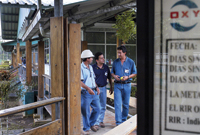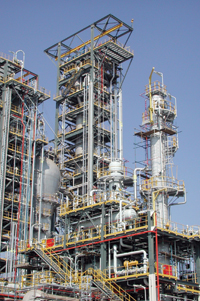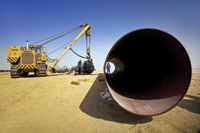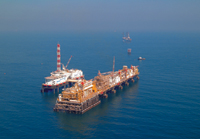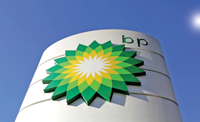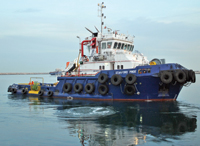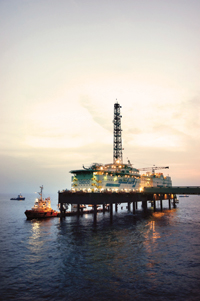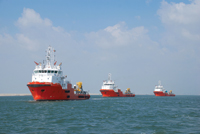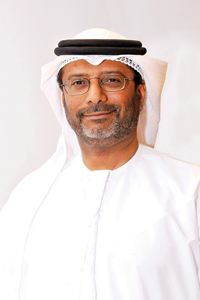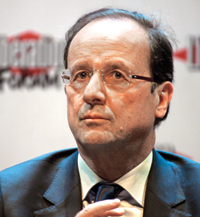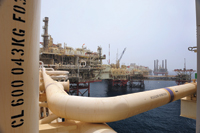
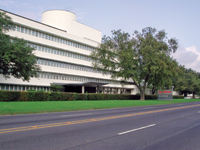 Exxon ... ramping up output at Upper Zakum
Exxon ... ramping up output at Upper Zakum
THE ExxonMobil-led Upper Zakum development will see the next major boost of nearly 100,000 barrels per day in 2014, although the offshore field will hit its targeted output only by early 2017, slightly later than originally planned, according to the most recent development plans.
Abu Dhabi’s Zakum Development Co (Zadco) venture is preparing to begin drilling on the first of four artificial islands, Exxon officials say. The South Island is now complete and Zadco will move one or two land rigs on the island to begin drilling in the coming months. Zadco is owned 60 per cent by Abu Dhabi National Oil Co (Adnoc) and 40 per cent by Exxon and Japan’s Jodco.
That work will support an increase of 90,000 barrels per day (bpd) from the field in 2014 and 90,000 bpd more in 2015, according to official Adnoc plans. That will bring the field to 730,000 bpd, the plans showed.
The final 20,000 bpd to reach 750,000 bpd is due by the end of 2016 or early 2017, according to the plans. Zadco originally intended to finish the work by 2015.
The estimated $10 billion UZ-750 project was launched after Exxon was selected by Abu Dhabi to join the Zadco consortium in 2006. Exxon was brought in to help expand the huge Upper Zakum field, which the US supermajor says holds some 50 billion barrels of oil, from 500,000 bpd to 750,000 bpd by increasing output from producing reservoirs and tapping new ones. Early expansion work at the field brought production to 575,000 bpd in 2011 and 2012, although there will be a slight drop in production to 550,000 bpd in 2013, the plans show.
The major part of the upgrade took some time to get off the ground, as concerns about costs forced Exxon and its partners to reconsider different alternatives to developing the field. The current configuration of the field involves some 400 wells scattered all over 500 square miles, but Zadco decided it would build four artificial islands in the shallow Arabian Gulf waters in the four main segments of the fields: south, north, central and west.
The islands allow the use of land rigs that will cut costs. Savings will also come from drilling horizontal wells with an extended reach, meaning fewer wells are required. As the islands are completed and the new wells are phased in, the old wells will be slowly phased out.
By 2046, Exxon says that all of the original 400 wells will have been taken off line and the field will be producing crude only from the island-based producers.
The new infrastructure will have a total capacity of 824,000 bpd, but Exxon’s models out to 2060 do not show production reaching that level. The South Island capacity is 206,000 bpd, North Island is 279,000 bpd and Central Island, with 800 people expected to inhabit it, will be able to handle 236,000 bpd. West Island, which is the smallest, is built to process up to 103,000 bpd.
All the islands will pool their crude in a central processing facility, which will send the Upper Zakum grade crude to Zirku Island for export.
Exxon, Royal Dutch Shell and BP produce oil at onshore fields in Abu Dhabi under a concession agreement that dates back to 1939.The fields began commercial production in 1960 and Abu Dhabi’s state-run oil company joined as a partner in the 1970s, forming the current operating venture Abu Dhabi Co for Onshore Oil Operations, or Adco. Adco holds the concession for six main onshore fields until 2014.



















































































